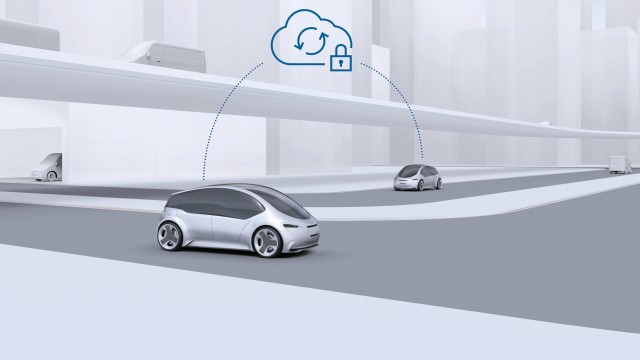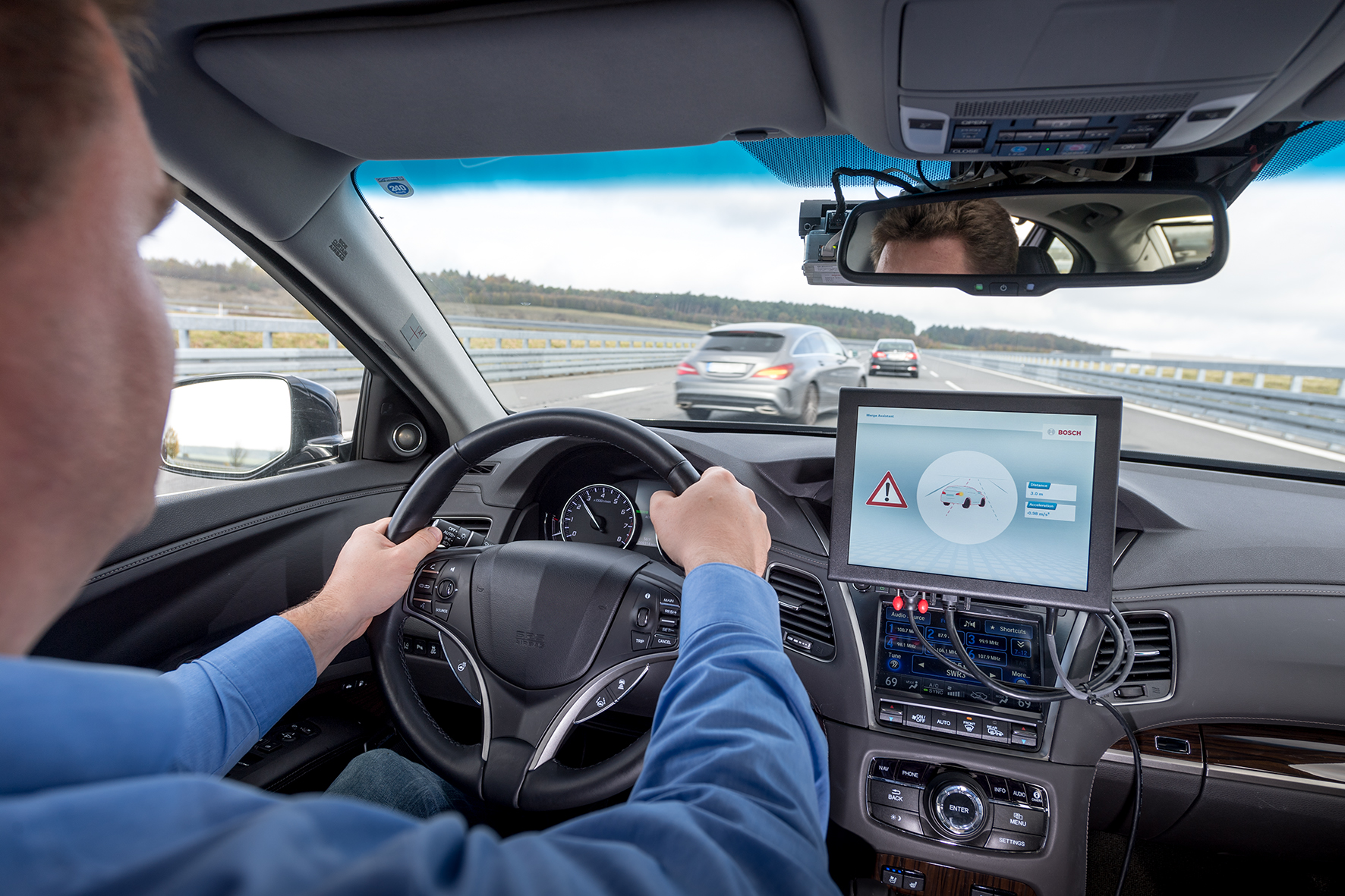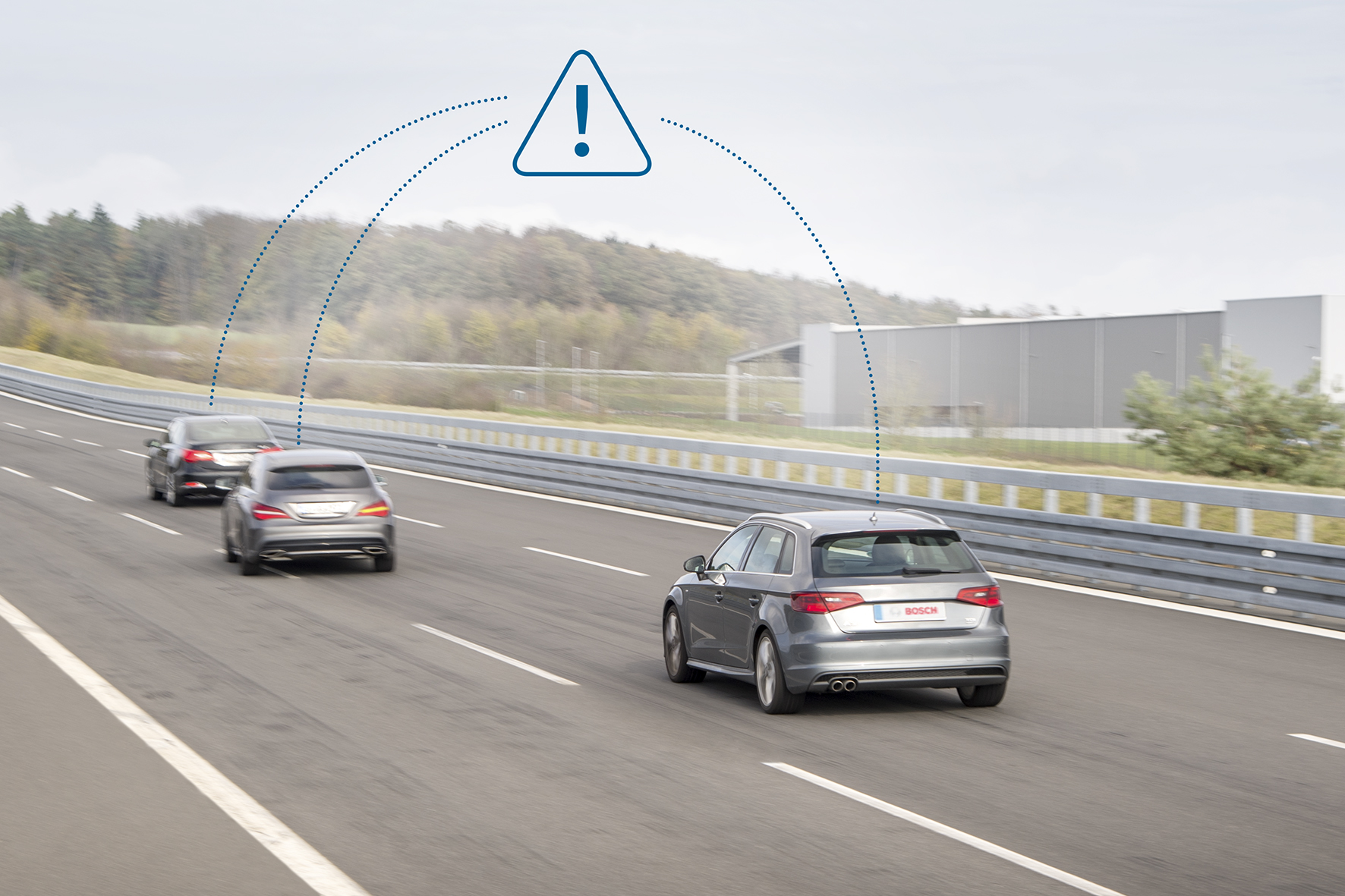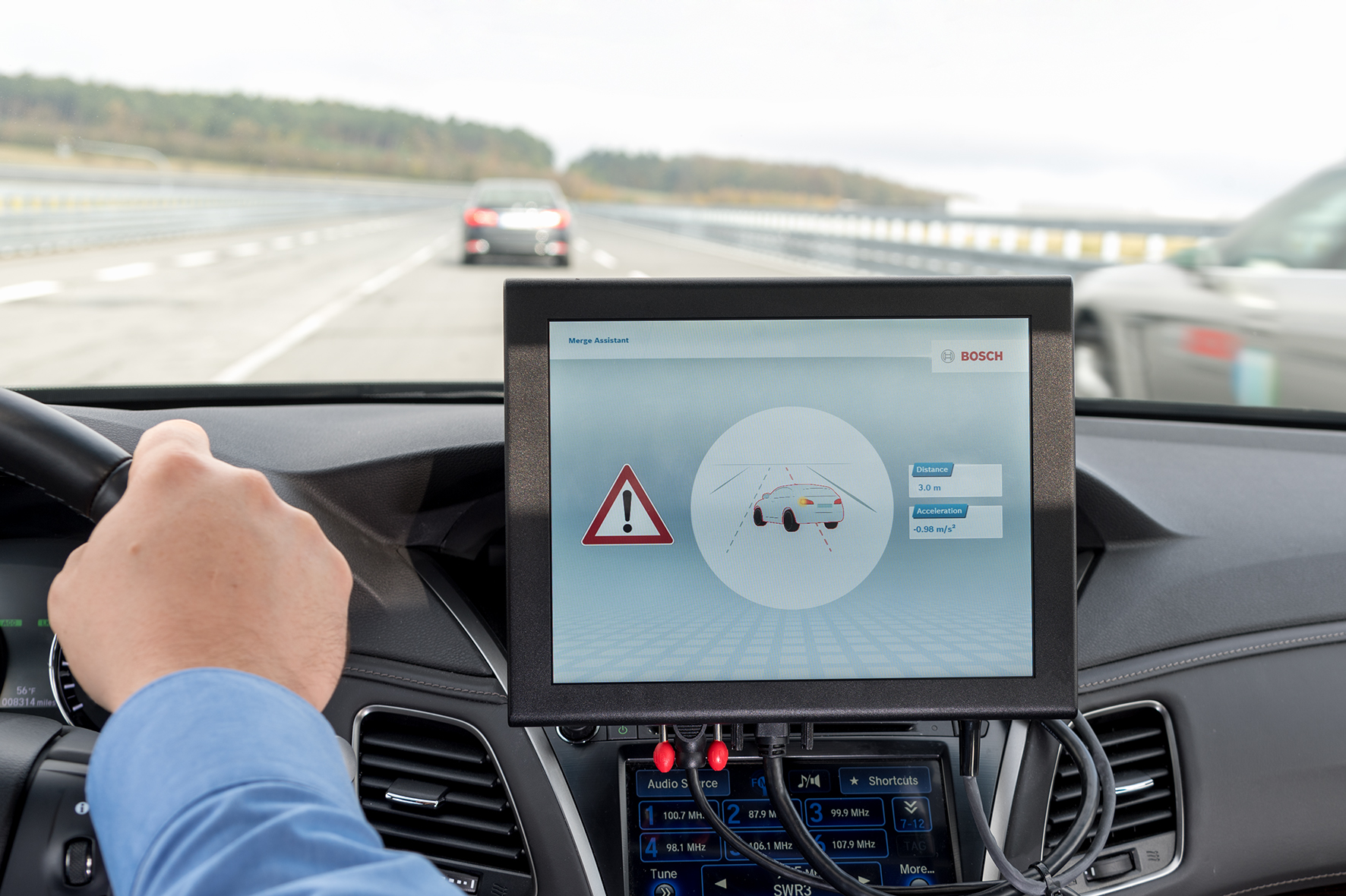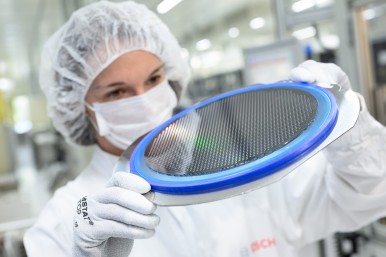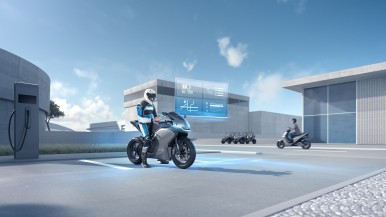Stuttgart, Germany – It is Friday afternoon, and the traffic on the A9 freeway near Munich is congested. Navigation requires complete concentration. Other vehicles are constantly cutting in front of the car, forcing the driver to brake abruptly − which is the cause of many accidents, slow-moving traffic, and stress. Intelligent mobile telephony can alleviate some of these problems and help prevent potentially dangerous driving situations from becoming even more critical. Known as Cellular-V2X (vehicle to everything), the technology makes it possible for a car to communicate with other vehicles and its surroundings through mobile telephony. Since February 2017, Bosch, Vodafone, and Huawei have been performing trials of the new, high-performance technology − the first companies in Europe to do so. The A9 freeway in Bavaria is the location for the field tests with the first 5G test modules. For the first time, the companies are demonstrating that driver assistance systems such as ACC adaptive cruise control also benefit from the direct, instantaneous exchange of information between vehicles. Until now, Cellular-V2X has been used as a real-time alert system when changing lanes on the freeway or when the car ahead suddenly brakes. ACC not only warns the driver, but also automatically accelerates and brakes. The new mobile telephony system thus paves the way for automated driving. Achieving the goal of fully connected traffic will involve teaching vehicles to communicate with each other and exchange data directly. Direct communication between vehicles provides information about what is happening in parts of an intersection not visible to the driver, over the crest of a hill, or on the freeway beside or behind the driver’s own car.
Mobility is the largest Bosch Group business sector. In 2023, its sales came to 56.2 billion euros, or just under 60 percent of total Group sales. This makes the Bosch Group one of the leading mobility suppliers. Bosch Mobility pursues a vision of mobility that is safe, sustainable, and exciting. For its customers, the outcome is integrated mobility solutions. The business sector’s main areas of activity are electrification, software and services, semiconductors and sensors, vehicle computers, advanced driver assistance systems, systems for vehicle dynamics control, repair-shop concepts, as well as technology and services for the automotive aftermarket. Bosch is synonymous with important automotive innovations, such as electronic engine management, the ESP anti-skid system, and common-rail diesel technology.
The Bosch Group is a leading global supplier of technology and services. It employs roughly 429,000 associates worldwide (as of December 31, 2023). The company generated sales of 91.6 billion euros in 2023. Its operations are divided into four business sectors: Mobility, Industrial Technology, Consumer Goods, and Energy and Building Technology. With its business activities, the company aims to use technology to help shape universal trends such as automation, electrification, digitalization, connectivity, and an orientation to sustainability. In this context, Bosch’s broad diversification across regions and industries strengthens its innovativeness and robustness. Bosch uses its proven expertise in sensor technology, software, and services to offer customers cross-domain solutions from a single source. It also applies its expertise in connectivity and artificial intelligence in order to develop and manufacture user-friendly, sustainable products. With technology that is “Invented for life,” Bosch wants to help improve quality of life and conserve natural resources. The Bosch Group comprises Robert Bosch GmbH and its roughly 470 subsidiary and regional companies in over 60 countries. Including sales and service partners, Bosch’s global manufacturing, engineering, and sales network covers nearly every country in the world. Bosch’s innovative strength is key to the company’s further development. At 136 locations across the globe, Bosch employs some 90,000 associates in research and development, of which nearly 48,000 are software engineers.
Additional information is available online at www.bosch.com, www.iot.bosch.com, www.bosch-press.com.

